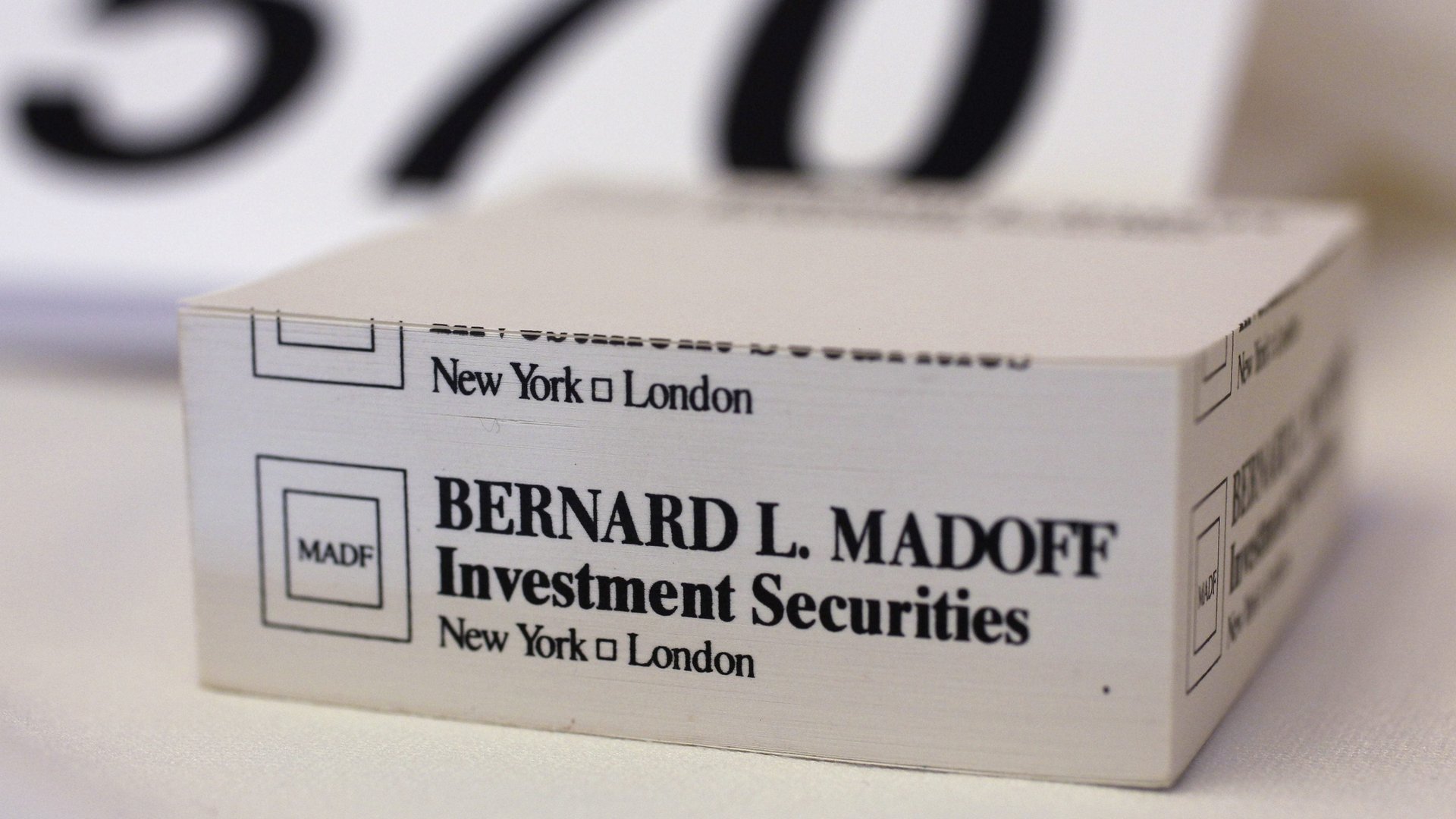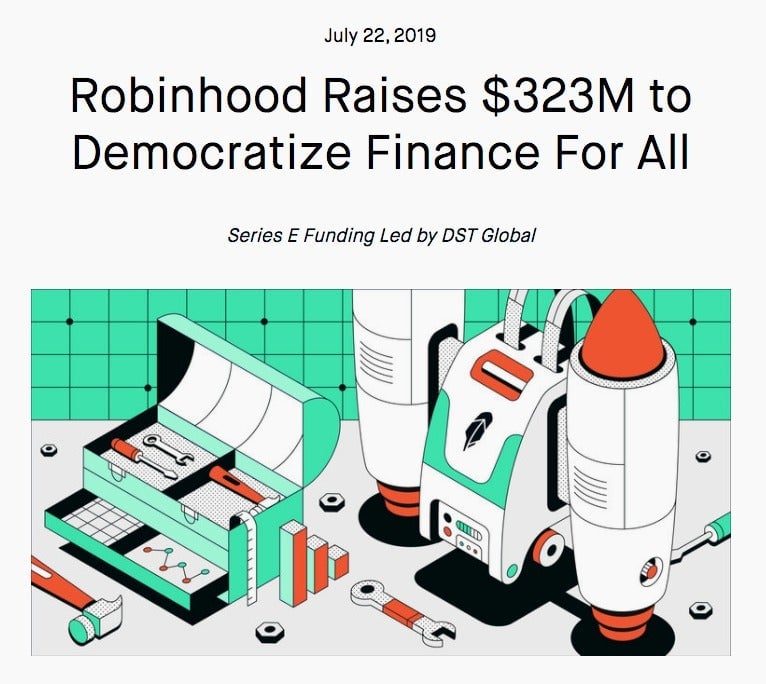How Ponzi mastermind Bernie Madoff enabled the US retail trading boom
Bernard L. Madoff ran the world’s largest Ponzi scheme. He was also a key pioneer of the business model that helps underpin “commission-free” stock brokerage for everyday traders. In some respects, Madoff is the godfather of today’s retail trading boom.


Bernard L. Madoff ran the world’s largest Ponzi scheme. He was also a key pioneer of the business model that helps underpin “commission-free” stock brokerage for everyday traders. In some respects, Madoff is the godfather of today’s retail trading boom.
Madoff ran his investment fraud from the 17th floor of Manhattan’s Lipstick Building at 885 Third Avenue. Two floors up, he and his family had a separate trading operation that burnished his credentials on Wall Street. The trading division of Bernard L. Madoff Investment Securities was auctioned off after the Ponzi scheme unraveled in 2008, and the money was used to compensate victims. This is the story of that trading operation, which was seen as a respected trailblazer on Wall Street, and is based on interviews with people in the industry during Madoff’s day, as well as books and articles about the events.
Madoff’s firm was an important advocate of payment for order flow (PFOF), which has become a critical money maker for brokerages like Robinhood and Charles Schwab (Schwab was an early Madoff customer). Brokerages get paid for their customers’ orders from market makers—contemporary versions of what Madoff’s trading company was.
If you buy a Tesla share from Robinhood, it doesn’t come from the Nasdaq exchange. It will come from a market maker who has stock orders coming in from big and small traders, and it holds some of those shares in its inventory. Market makers earn a profit from the gap between the bid and the offer, and they provide a core service for financial markets—they post a steady stream of bids as offers so investors can make transactions. It’s pretty much the same way a used-car salesman makes money: they buy cars from regular people as cheaply as possible then offload them later at a higher price. Currency exchanges in airports do the same thing. Thanks in part to these payments, brokerages are able to offer so called commission-free trading.

Good timing
Back in the 1960s, Madoff’s trading company was small and struggled to compete with bigger established firms, according to Traders Magazine. His firm specialized in the trades from everyday retail investors; these transactions are coveted by professional traders because they are usually small and uninformed, meaning easy to make money off of. But Madoff’s company struggled to get attention and was often ignored.
Luckily for Madoff, he had timing on his side. Officials had decided that trading in US stocks, particularly those of small companies that weren’t bought and sold on an exchange, needed an upgrade to electronic automation. That provided an opening for Madoff and his brother, Peter, who was seen as the company’s computer whizz.
The old days of phone calls between a few big trading firms were on their way out. The result, thanks to pressure from regulators, was the National Association of Securities Dealers Automated Quotation system—what we now know as Nasdaq. It was launched in 1971.
Madoff, as an underdog, was a fan of the electronic system. He knew it could break the big guys’ grip by highlighting whichever trading company could quote the best prices. “There was a great deal of resistance from the industry,” Madoff said in Eric Weiner’s book What Goes Up: The Uncensored History of Modern Wall Street. “We felt, as a small market-making firm, that this would level the playing field for us.”
Back then, Nasdaq was for emerging companies, like small retail firms and risky tech stocks (like Microsoft), that couldn’t meet the listing standards of an exchange like NYSE. But changes were also coming to the Big Board, as the NYSE is known. As stock trading and mutual funds became more popular, the exchange was struggling to keep up with the paperwork. In the 1970s, meanwhile, under pressure from federal regulators, the era of fixed commissions were coming to an end, as was the exchange’ monopoly system which gave specialists on the trading floor exclusive privileges.
With the SEC’s prodding, a system of stock quotes and trade routing was built. This opened up a route, through tenacity and ingenuity, for Madoff and his brother to storm the NYSE’s fortress. A lawyer who has represented Bernard Madoff didn’t respond to requests for comment.
Madoff was far from the only person in America who was pioneering “off-exchange” trading and payment for order flow in those years. Weeden & Co., founded in 1922, was among the biggest players in buying and selling NYSE-listed stocks away from the exchange. CEO Donald Weeden is credited with fighting against the NYSE’s monopoly and fixed commissions.
The new electronic system was “was terrific for Bernie,” Weeden told Traders Magazine. “They were very competitive with the New York and the other regional exchanges. He did very well doing that.”

Pay to play
By the 1980s, Madoff had gotten access to a wider swath of stocks, on and off of the New York Stock Exchange. But the Queens, New York native still had a problem: How do you stand out?
The answer was to pay for it.
Payment for order flow was already happening with unlisted stocks, and Madoff brought that model to NYSE-listed shares. It didn’t go over well with NYSE brokers, who typically charged a fee to execute trades. They were furious that someone was doing the exact opposite. NYSE veterans considered it little more than a bribe, according to Adam LeBor’s book, The Believers: How America Fell For Bernard Madoff’s $65 Billion Investment Scam.
Madoff, meanwhile, was to become a regular in Washington, something of an unofficial lobbyist and “senior statesman” for the industry. This influence was likely helpful when he went to war with the Big Board over payment for order flow. “Behind the scenes the NYSE was working hard to bring down Madoff,” LeBor wrote. A committee, headed by former SEC chairman David Ruder, had formed to decide whether paying for orders should be allowed.
Fortunately for Madoff, his stature had grown considerably. He was chairman of Nasdaq and, despite the obvious conflict of interest, was on the committee that debated the merits of payment for order flow, likely as a result of his growing influence and reputation. Representatives from Charles Schwab, Merrill Lynch, and Morgan Stanley were also on the panel.

Madoff wins
The strongest argument in Madoff’s favor, LeBor writes, was that “inducements” were already rife on Wall Street. Inducements are, essentially, mutual back scratching. An investment firm might have sent its stock trades to a Wall Street bank—not because it offered great brokerage, but because the investor likes the bank’s research. Giving the bank some brokerage business might be the only way to get that research. This type of behavior, Ruder decided, was how pretty much everything worked on Wall Street.
“Virtually no execution transaction took place in the stock market unless there was an inducement,” Ruder later said. “My conclusion was that if you cannot have any of these inducements then the whole market will collapse.”
Put another way, the market was already full of conflicts of interest. Madoff’s operations were, arguably, a slight improvement. At least the cash payments were transparent.
Others say Madoff was making an argument about promoting competition. “Bernie Madoff invented the practice on the justification that otherwise all orders would flow to the NYSE,” says John Coffee, a professor at Columbia Law School. “I thought it was a form of commercial bribery unless the rebate was passed onto the customer by the broker who received it.”
Madoff prevailed against the NYSE during Ruder’s committee in 1991, and he did so again during Congressional hearings a few years later. By 1995, the SEC had given payment for order flow its stamp of approval, as long as brokers told their customers what they were doing. “Madoff was under tremendous pressure and scrutiny,” Ruder told LeBor. “He handled it very well.”

Madoff’s legacy
Fast forward 25 years and Madoff is serving a 150-year sentence for defrauding investors, from international banks to a prominent holocaust survivor. His trading operation, seen as the legitimate side of the business, was purchased for as much as $25.5 million by a company called Surge Trading. The company disappeared in 2011 because of insufficient capital.
But payment for order flow lives on, and its effects have grown. At one point, Madoff’s firm claimed to have siphoned away around 10% of the NYSE’s volume. While his company is long gone, these off-exchange trades now account for nearly half of the total US stock market. Computerized market makers like Virtu and Citadel Securities have taken Madoff’s place as the dominant market makers for retail stock orders.
What does it mean for the everyday traders? By some measures, brokerage and market making appear to get more competitive each year. Back in Madoff’s day, market makers paid brokerages around 1 cent per share for orders. These days the going rate for Robinhood is around 0.0024 cent per share, according to filings. Market makers are required to give everyday trades the best bid or offer that’s available. Companies like Virtu and Citadel say they go a step further, providing “price improvement” worth hundreds of millions of dollars each year.
Since retail brokerages have abolished commissions—relying more on payment for order flow—trading volumes have skyrocketed. Robinhood had more than 4.3 million daily average trades in March, more than all the other brokerages in this chart. In the first quarter, it raked in $30 million worth of payments for those customer orders.
Order flow payments are still controversial. One group argues that retail traders are getting a better deal than ever. Another points out that conflicts of interest remain, and that brokerage has gotten more opaque. A flat commission was easy to understand, and now the cost to trade securities is buried somewhere in spread between the bid and offer, which is harder to understand and price compare. What’s more, the successors to Madoff’s firm have sucked away an immense amount of market share from NYSE and Nasdaq. At some point, the prices on those exchanges, which are a critical part of the US financial system, could become less efficient and relevant.

In his heyday, Madoff portrayed himself as someone who democratized finance for the little guy—a renegade who went up against NYSE. These days the players have changed, but the sales pitch is remarkably similar. Now it’s Robinhood that touts itself as a brokerage that will “democratize finance for all.”